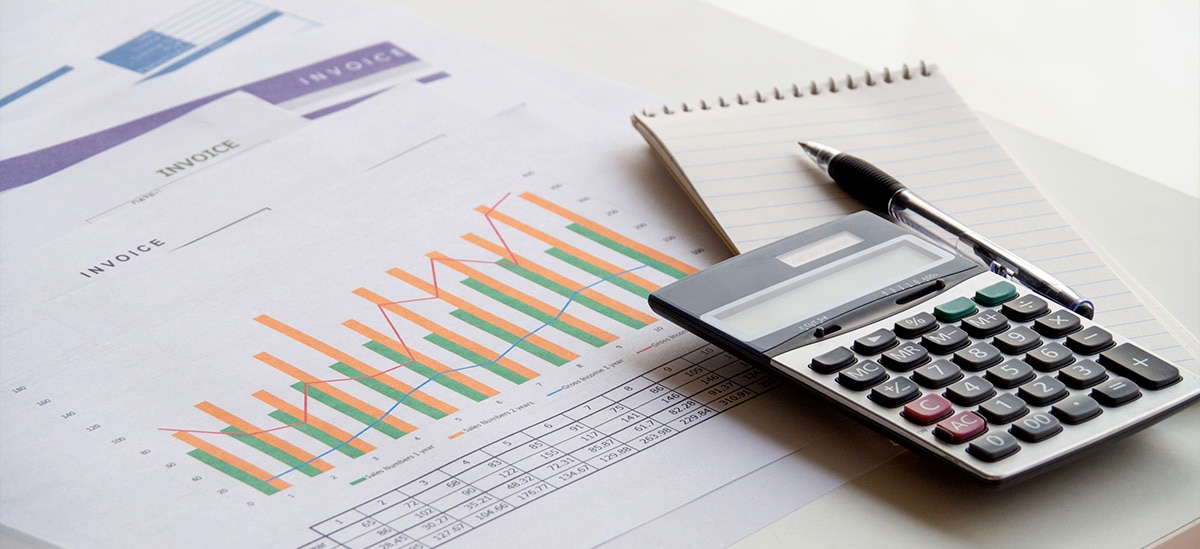
- A profit and loss (P&L) statement shows a company’s profitability over a specific period. It summarizes revenues, costs, and expenses to calculate net profit or loss.
- Unlike the balance sheet or cash flow statement, the P&L focuses on profitability, not financial position or cash flow.
- Businesses use either a single-step or multi-step P&L, depending on their complexity and reporting needs.
- Creating an accurate P&L requires tracking revenue and expenses carefully, along with considering taxes and depreciation.
- The P&L is essential for making financial decisions, planning budgets, and attracting investors.
Tracking your company’s financial performance is essential for growth, but where do you start? A profit and loss statement is one of the more important financial documents for any business, providing a clear picture of revenue, expenses, and overall profitability. Whether you're a business owner optimizing operations, an investor exploring opportunities, or someone looking to improve your financial knowledge, understanding a profit and loss statement can lead to smarter decisions.
In this guide, we’ll break down the key components of a profit and loss statement, explain how to create one, and explore how it compares to other financial documents — so you can confidently assess your company’s financial health.
What Is a Profit and Loss Statement?
A profit and loss statement shows how much money a company makes and spends over a set period. Also called a P&L, PL, or P and L statement, it helps businesses track profits and spot financial trends. It’s a key tool for planning, investing, and making smart business decisions.
Definition and Significance in Financial Analysis
A P&L statement breaks down a company’s revenue, costs, and expenses. It’s one of the three main financial statements, along with the balance sheet and cash flow statement. Business owners, investors, and stakeholders use it to measure profitability and efficiency. Simply put, it shows whether a business is making money — or losing it.
Key Components: Revenues, Costs, and Expenses
A typical P&L statement consists of the following:
- Revenue (sales): Total income generated from business operations
- Cost of goods sold (COGS): Direct costs associated with producing goods or services
- Gross profit: Revenue minus COGS
- Operating expenses: Costs such as rent, salaries, and utilities
- Operating income: Gross profit minus operating expenses
- Net profit (or loss): Final profit figure after deducting taxes and other non-operational expenses
Comparing P&L Statements with Other Financial Documents
A P&L statement focuses on profitability over a defined period, helping assess business performance. This differs from a balance sheet and a cash flow statement.
A balance sheet provides a snapshot of assets, liabilities, and equity at a specific point in time. Alternatively, a cash flow statement tracks actual cash inflows and outflows rather than accounting-based revenue and expenses.
Types of P&L Statements
Businesses use different formats of P&L statements depending on complexity, industry norms, and reporting needs.
Multi-Step vs. Single-Step Formats
- Single-step P&L statement: Lists all revenues and expenses in separate sections and calculates net income in a straightforward manner. This is suitable for smaller businesses.
- Multi-step P&L statement: Includes multiple subtotals, such as gross profit and operating income, providing more detailed insights into financial performance.
Variations in Different Industries
- Retail and manufacturing: P&L statements in these industries focus on COGS and inventory management, as they directly impact profitability and financial planning.
- Service-based businesses: These businesses emphasize operating expenses like wages and rent, along with service revenue, which is key for tracking income from billable services.
- Technology and startups: In tech, research and development (R&D) costs are highlighted, as they reflect the investment in innovation and long-term growth potential.
How To Create a P&L Statement
Creating a profit and loss statement is key to understanding your business’s finances. It helps track income, spot trends, and control costs. With a clear P&L, you can make smarter decisions and boost profitability. This section breaks it down step-by-step, giving you the tools to create a clear and actionable report.
Gathering Necessary Financial Data
- Revenue records from sales invoices and receipts
- Expense reports, including payroll, rent, and utilities
- Tax documents and interest statements
- Depreciation and amortization details for assets
Step-by-Step Guide to Preparation
Below are the steps you can take to prepare your P&L statement accurately and gain a clear picture of your business’s financial health:
- List revenues: Record all sources of income
- Calculate COGS: Deduct the cost of materials and production
- Determine gross profit: Subtract COGS from revenue
- Account for operating expenses: Include rent, salaries, and marketing
- Compute operating income: Deduct operating expenses from gross profit
- Adjust for other expenses and taxes: Include interest, depreciation, and tax obligations
- Arrive at net profit (or loss): The final figure after all deductions
Common Mistakes To Avoid
Even small mistakes in a P&L statement may lead to misleading financial insights. Avoid these common pitfalls to ensure your statement accurately reflects your business’s profitability:
- Inconsistent record-keeping: If your financial records aren’t accurate and up to date, your reports won’t be either. Without a reliable system, tracking income and expenses becomes messy, leading to financial errors that may impact business decisions and even tax obligations.
- Ignoring non-operating expenses: Many businesses focus only on daily operating costs and forget about things like loan interest, depreciation, and one-time charges. These expenses may have a significant impact on your net profit, so they need to be included for a full financial picture.
- Misclassifying revenue and expenses: Putting income or expenses in the wrong category may throw off your profitability analysis. For example, if you count a capital expense as an operating cost, it could make short-term expenses look inflated. Not separating revenue streams may also make it harder to see which parts of the business are really making money.
- Overlooking depreciation and taxes: Depreciation accounts for the gradual loss of value in your assets, while taxes are a major financial obligation. Ignoring them may lead to an inaccurate net profit figure and cause cash flow issues — or even costly penalties.
Importance of P&L Statements
Your P&L statement is a powerful tool for managing your business. It shows where you stand financially and helps track performance over time. By learning how to create and analyze it, you can make smarter decisions, spot growth opportunities, and keep your business financially strong.
Role in Financial Reporting for Small Businesses
Accurate financial reporting is essential for small businesses to maintain transparency, secure funding, and plan for the future. Small businesses use P&L statements to:
- Track income and expenses: Regularly monitoring cash flow ensures that revenue covers costs and highlights potential financial challenges.
- Prepare for tax filing: A detailed P&L statement simplifies tax reporting by clearly outlining taxable income and deductible expenses.
- Identify cost-saving opportunities: Analyzing trends in expenses can reveal areas where spending can be reduced or optimized.
- Evaluate financial growth over time: Comparing P&L statements from different periods helps businesses assess progress and adjust strategies for sustainable growth.
Contributions to Decision Making and Strategy Formulation
Accurate financial data is key to making smart decisions, and a well-kept P&L statement provides the insights you need for business success. Here’s how P&L statements help business leaders:
- Make informed budgeting and investment choices: By understanding your cash flow and profitability, you can allocate resources more wisely and plan for growth.
- Adjust pricing strategies based on profitability trends: Evaluating revenue and cost trends lets you adjust pricing to boost profits while staying competitive.
- Monitor operational efficiency and control costs: Spotting areas where you’re overspending helps you streamline operations and improve overall financial health.
- Secure loans and attract investors by demonstrating financial viability: A clear, well-documented P&L statement shows lenders and investors that your business is financially stable and has room to grow.
Frequently Asked Questions
What Is the Main Purpose of the Statement of Profit or Loss?
The primary purpose of a P&L statement is to measure a company’s financial performance over a given period of time. It helps business owners, investors, and stakeholders understand profitability trends and assess operational efficiency.
What Is a Simple Statement of Profit or Loss?
A simple statement of profit or loss, often a single-step P&L, consolidates revenues and expenses into broad categories to quickly determine net income. This format is ideal for small businesses with straightforward financial activities.
How Does It Differ from a Balance Sheet?
A P&L statement reflects financial performance over time, while a balance sheet provides a snapshot of a company’s financial position at a specific moment. The balance sheet details assets, liabilities, and equity, whereas the P&L statement focuses on revenue, expenses, and net profit.
Moving Forward: Leveraging P&L Insights for Growth
Understanding P&L statements is key to boosting financial literacy and driving business growth. By keeping track of revenue, costs, and expenses, you may be able to make smarter decisions, increase profitability, and maintain financial stability. A well-structured P&L isn’t just a tool — it’s a game-changer for better financial management and long-term success.







